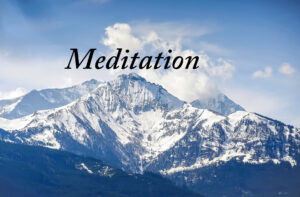Separation of the Purusha from Prakriti by cultivating and deepening the Sakshi bhav (witness Consciousness) is indeed described as one of the first important steps in the Integral Yoga as well as the Yoga of the Gita. How can the soul completely submerged and subject to nature can hope for the supramentalisation when it will be impossible even to discover the psychic being if we remain a slave at the mercy of all the forces of lower nature?
The Gita as well as Sri Aurobindo both speak of three Purushas, – the Divine involved in creation as the mutable changing becoming, the Kshara, the Divine as the Immutable Brahman beyond change, Akshara and the highest Purusha, the Purushottama which is the suprapersonal Divine. Both Sri Aurobindo and Sri Krishna emphasize on surrender and both speak about the witness Purusha. The very second chapter of the Gita is named after Sankhya Yoga and certain verses in the Buddhi Yoga elaborate upon the necessity of turning the Buddhi inward and upwards (as a tortoise withdrawing into the shell). Surrender and the separation from Prakriti are not opposed to each other. Rather they complement each other. How can we surrender something which we have not yet reclaimed by mastery and become conscious of? And for becoming conscious as well as certain degree of self mastery we have to go through the Buddhi yoga. Both Sri Krishna and Sri Aurobindo suggest this as an important preliminary condition before one proceeds further.
References are in Sri Aurobindo’s Essays on the Gita chapter 8, 9, 10 as well as chapter 2 of the Bhagwad Gita. You will find the same thing outlined in The Synthesis of Yoga. If you are interested you should best go through these chapters yourself.
Affectionately,
Alok Da



